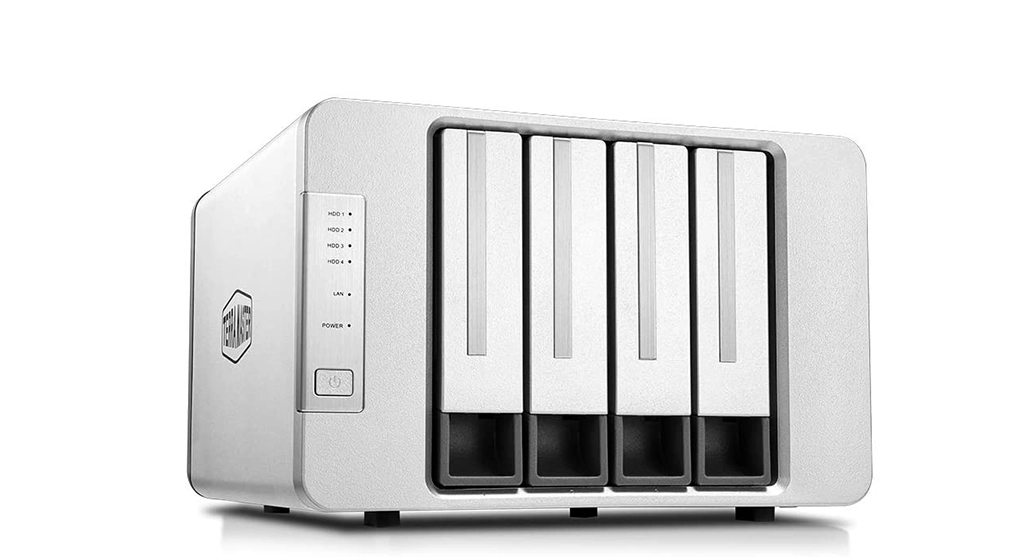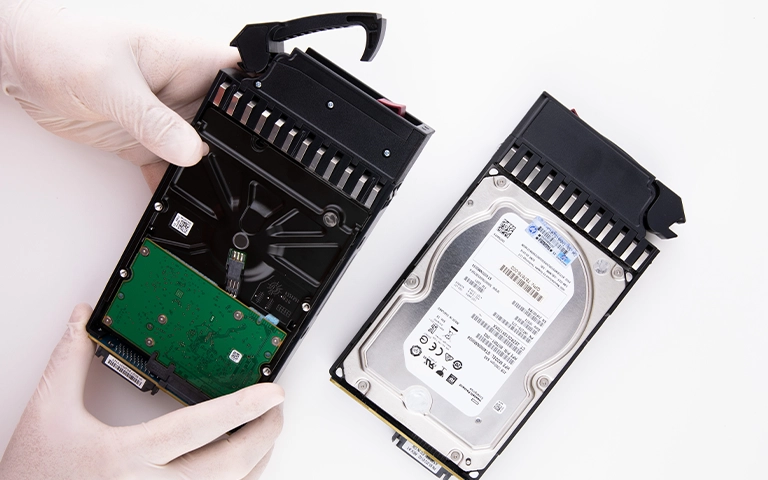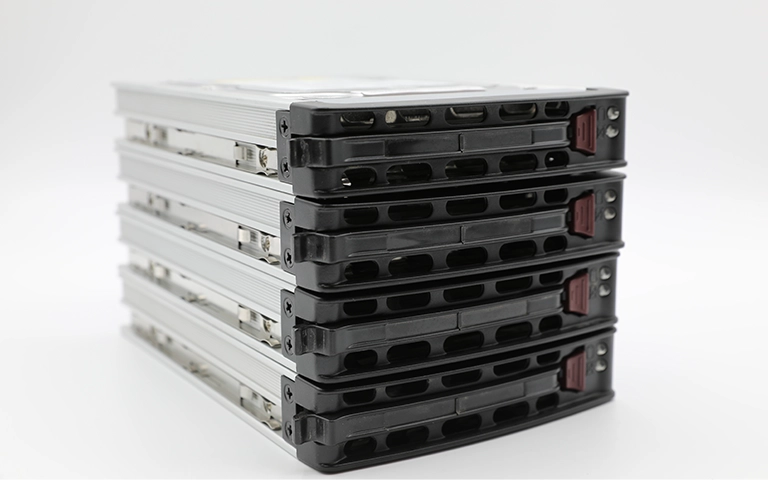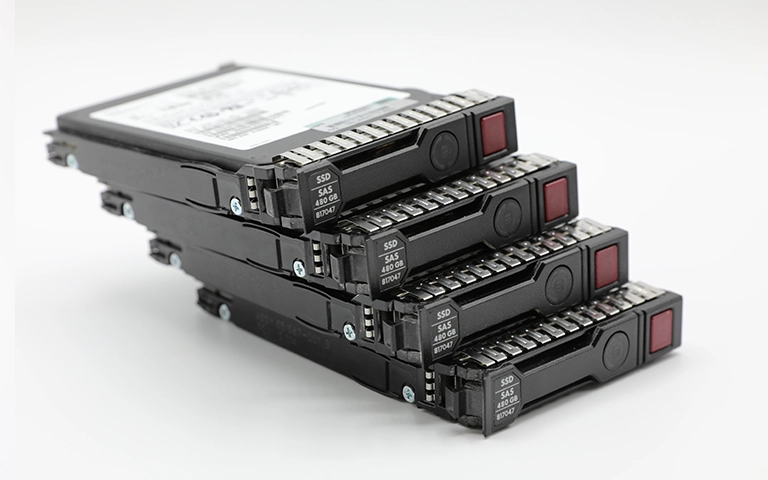When handling large volumes of data, safeguarding it against drive failures is a top priority. Traditional RAID levels such as RAID 0, 1, and 5 provide a balance between performance and redundancy, but as storage arrays scale, so do the risks. This is where RAID 6 becomes essential.
RAID 6 is built on dual parity. Unlike RAID 5, which relies on a single parity block, RAID 6 uses two. This additional layer of protection enables the system to keep running even if two drives fail simultaneously. It delivers a strong balance of capacity, performance, and reliability, making it a popular choice for enterprise storage and large-scale NAS environments.
In this guide, you will learn how RAID 6 works, its key advantages and limitations, how it compares with RAID 5, when it should be implemented, and the steps to take if a RAID 6 array fails.

What Is RAID 6? Dual Parity Explained
RAID 6 is a storage configuration designed to safeguard your data against multiple drive failures. It functions similarly to RAID 5 but provides an additional layer of protection. Rather than relying on a single set of parity information to rebuild lost data, RAID 6 uses two.
This means that even if two drives in the array fail simultaneously, the system can continue operating while keeping your data accessible. The parity information is distributed across all drives, ensuring no single disk bears the full burden of recovery.
From a capacity perspective, RAID 6 always reserves the equivalent of two drives for parity. For example, with six 4TB drives, four drives (16TB) are available for data, while two are dedicated to protecting your information.
If you’d like to see how RAID 6 compares with other configurations, explore our guide on the different RAID levels.
RAID 6 Benefits and Performance
RAID 6 is widely used because it delivers a strong balance between protection and efficiency. Its advantages extend beyond simply withstanding two drive failures.
Key benefits of RAID 6 include:
High fault tolerance – With dual parity, the array continues to operate even if two drives fail at the same time. This provides more time to replace failed drives without exposing data to risk.
Reliability for large arrays – As the number of drives grows, so does the likelihood of simultaneous failures. RAID 6 is better suited than RAID 5 for large-scale storage systems where risks are greater.
Strong read performance – Data is striped across multiple drives, allowing fast read speeds. In many cases, read performance is on par with RAID 5.
Consistent data availability – Even during a rebuild, the array remains accessible, which is essential in enterprise and business environments.
Although RAID 6 introduces additional overhead on write operations, it remains one of the most dependable RAID levels for setups requiring both high performance and robust fault tolerance.

RAID 6 Limitations and Trade-Offs
Although RAID 6 provides strong data protection, it is not without its disadvantages. Understanding these trade-offs is essential when determining whether it suits your storage requirements.
Main limitations of RAID 6 include:
Write performance penalty – Because the system must calculate and write two sets of parity, write speeds are slower compared with RAID 5 or RAID 10.
Extended rebuild times – When a drive fails, rebuilding can take many hours or even days depending on the size of the array. During this period, performance is reduced and the risk of a second failure rises. You can learn more in our guide to RAID failure rates.
Reduced storage efficiency – Since two drives are always reserved for parity, the usable capacity is lower than RAID 5. For instance, in an eight-drive array, only six drives are available for data.
Greater hardware demands – Dual parity requires more processing power, placing additional strain on the RAID controller.
These limitations do not make RAID 6 unsuitable, but they underline the importance of weighing redundancy, performance, and capacity before deciding whether it is the right configuration for your system.
RAID 6 vs RAID 5: Key Differences
At first glance, RAID 5 and RAID 6 appear similar since both use striping with parity. The crucial difference lies in fault tolerance. RAID 5 can withstand the loss of a single drive, whereas RAID 6 can handle the failure of two drives simultaneously.
Beyond this, factors such as write performance, rebuild times, and usable capacity differ. RAID 6 requires more processing power and delivers slower write speeds, but it offers a higher level of protection for larger storage arrays.
If you are deciding which configuration best meets your requirements, see our detailed guide comparing RAID 5 and RAID 6.

When to Use RAID 6: Common Use Cases
RAID 6 is not the right solution for every storage setup, but it excels in environments where reliability is essential.
Typical scenarios where RAID 6 is recommended include:
Enterprise storage systems – Large databases, virtualisation hosts, and business-critical applications that cannot afford downtime benefit from RAID 6’s fault tolerance.
NAS environments with many drives – The larger the array, the higher the risk of multiple failures. RAID 6 is a safer choice than RAID 5 for large-scale NAS deployments.
Archival storage – When write performance is less important than safeguarding long-term data, RAID 6 offers additional protection against drive loss.
Critical business operations – Sectors such as finance, healthcare, and media production often adopt RAID 6 to ensure consistent data availability under demanding conditions.
In each of these situations, RAID 6 provides the added layer of security that single-parity arrays cannot deliver. It mitigates risk while keeping data accessible, even during unexpected drive failures.
Fast turnaround times for business-critical data
RAID 6 Recovery: What to Do If It Fails
Although RAID 6 is designed for resilience, it is not immune to failure. Dual parity can protect against two drive losses, but issues such as controller faults, failed rebuilds, or simultaneous drive errors can still cause data inaccessibility.
In these situations, it is crucial not to attempt DIY recovery. Forcing rebuilds without the necessary expertise can overwrite data permanently, while repeatedly powering drives on and off may cause further mechanical damage.
If your RAID 6 array fails, the safest course of action is to consult professionals specialising in advanced RAID recovery.
At RAID Recovery Services, we manage RAID 6 failures resulting from hardware damage, software corruption, and unsuccessful rebuilds. Our engineers use specialist tools and cleanroom facilities to safely restore access to your data.
RAID 6 recovery is achievable in many cases, but success depends on swift and cautious action. Stop using the array immediately and seek expert assistance to safeguard your files.

How to Keep Your RAID 6 Array Healthy
RAID 6 delivers strong protection, but ongoing maintenance is essential to ensure stability and minimise risks. Regular monitoring and best practices can extend the lifespan of your array.
Best practices for maintaining a RAID 6 array include:
Monitor drive health – Use SMART monitoring tools and RAID controller logs to detect early warning signs such as rising error counts.
Choose enterprise or NAS-grade drives – Consumer desktop drives are not designed for 24/7 workloads or vibration resistance. RAID-optimised drives provide greater durability under constant demand.
Keep firmware and drivers updated – Updates for RAID controllers and drives often resolve stability, performance, and compatibility issues.
Inspect connections regularly – Loose or faulty cables can cause drives to drop from the array, leading to unnecessary rebuilds.
Maintain proper cooling – Excess heat shortens drive lifespan and raises the likelihood of multiple drive failures.
Implement a backup strategy – Even with RAID 6 protection, backups are essential to guard against accidental deletion, ransomware, or catastrophic events.
These practices will not remove every risk, but they greatly enhance reliability and help reduce the likelihood of unexpected downtime.
Conclusion: Is RAID 6 Right for You?
RAID 6 is a robust solution when you require both performance and protection. Its dual parity design enables an array to withstand two drive failures, making it more secure than RAID 5 for large-scale or business-critical storage environments. However, it does involve trade-offs, including slower write speeds, longer rebuild times, and lower storage efficiency.
If your infrastructure values uptime and data protection over maximum write performance, RAID 6 is often the best fit. It is commonly deployed in enterprises, NAS setups with many drives, and industries where data availability is essential.
That said, no RAID level offers complete protection. Failures can and do occur, and when they do, recovery must be handled with care. At RAID Recovery Services, we specialise in RAID 6 recovery and can restore access to your data quickly and securely.
Facing a RAID 6 failure? Contact RAID Recovery Services today to speak with a recovery expert.

Trust the experts with proven results
Frequently Asked Questions
Can RAID 6 survive three drive failures?
No. RAID 6 can tolerate up to two simultaneous drive failures. If a third drive fails before the rebuild process completes, the array will fail and data may be lost.
Is RAID 6 better than RAID 10?
It depends on your objectives. RAID 6 offers greater fault tolerance and higher usable capacity in large arrays, while RAID 10 delivers faster write performance and shorter rebuild times.
How long does a RAID 6 rebuild take?
Rebuild duration depends on array size, drive capacity, and system workload. In large arrays, a rebuild can take many hours or even several days, during which performance is reduced.
Do I still need backups if I use RAID 6?
Yes. RAID provides protection against drive failures, but it does not safeguard against accidental deletion, file corruption, or malware. A robust backup strategy is always essential.